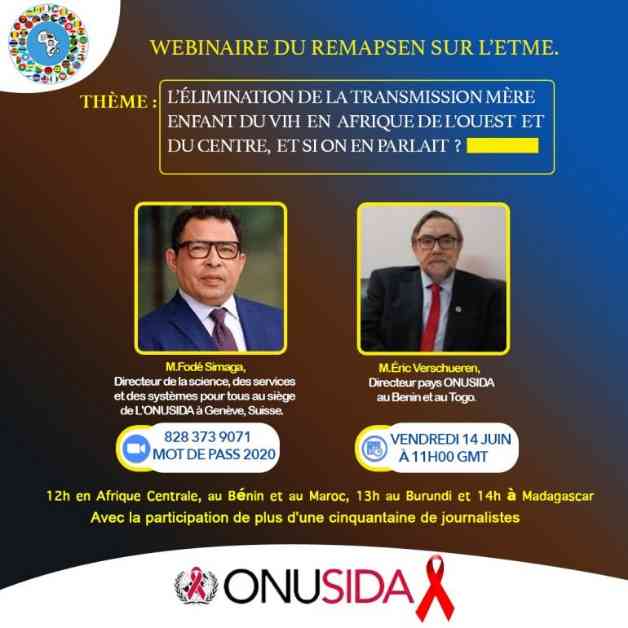The African Media Network for Health and Environment Promotion (REMAPSEN) held its regular webinar on the Elimination of Mother-to-Child HIV Transmission on June 14th. It is important to note that the African continent has the highest rate of people infected with the virus, with South Africa leading in infections, followed by Mozambique and Nigeria.
The event, held in a Zoom format, was led by the president of REMAPSEN, Mr. Bamna Youssouf, in collaboration with the UNAIDS Regional Office. At least 55 African journalists participated in the webinar, which was facilitated by the Director of Services at the Geneva Headquarters in Switzerland, Fodé Simaga, and the Representative of the UNAIDS Office in Benin and Togo, Étic Verschueren.
During his address, Fodé Simaga emphasized that the elimination of transmission will lead to the eradication of the disease, and another major challenge is to raise awareness among pregnant women. According to Étic Verschueren, the UNAIDS Country Director for Benin and Togo, journalists play a crucial role in sensitizing pregnant women to access healthcare facilities.
The elimination of mother-to-child transmission of HIV in Africa remains a major challenge for UNAIDS. Efforts to address this issue require collaborative efforts from various stakeholders, including governments, healthcare providers, NGOs, and the media. By raising awareness about the importance of prenatal care and HIV testing, progress can be made towards achieving the goal of zero new infections among children.
In addition to raising awareness, it is essential to address the underlying factors that contribute to the high rates of mother-to-child transmission in Africa. This includes improving access to healthcare services, promoting HIV testing and counseling, providing antiretroviral treatment to pregnant women living with HIV, and addressing social determinants of health such as poverty, stigma, and discrimination.
Furthermore, investing in research and development of new prevention strategies, such as pre-exposure prophylaxis for pregnant women at high risk of HIV infection, can also help in reducing transmission rates. Education and empowerment of women and girls, as well as engaging men in reproductive health and HIV prevention, are also critical components of a comprehensive approach to eliminating mother-to-child transmission of HIV.
In conclusion, while the challenge of eliminating mother-to-child HIV transmission in Africa is significant, it is not insurmountable. With continued commitment, collaboration, and innovation, it is possible to create a future where every child is born free from HIV. The role of journalists in raising awareness and promoting positive behavioral change is vital in this collective effort to achieve an AIDS-free generation in Africa.




















